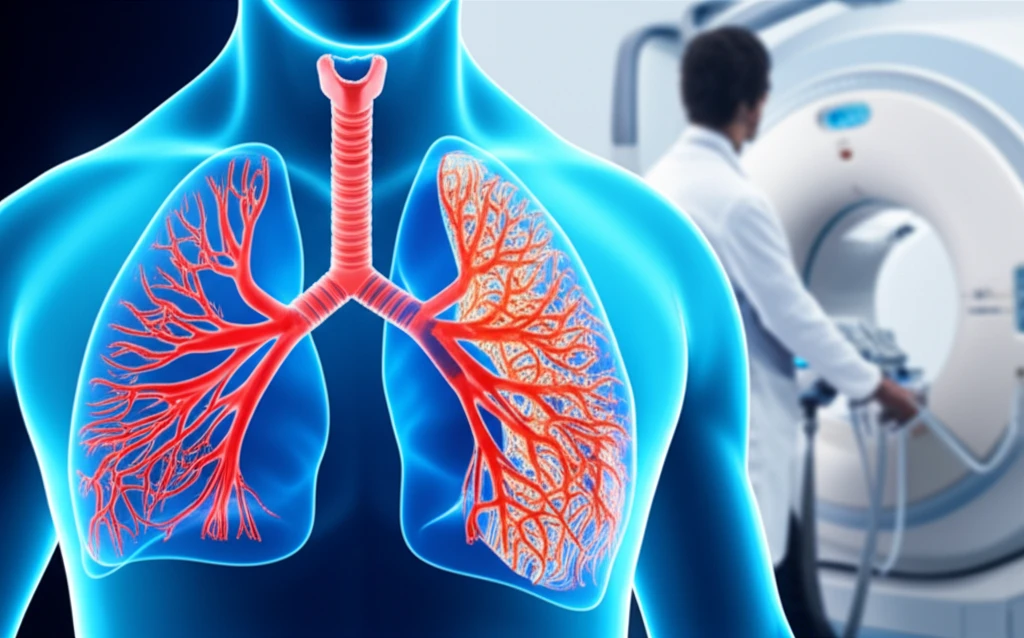
Lung Cancer's Hidden Clues: How Blood Flow Reveals the Secrets of AC vs. SCC
"New research unveils the distinct blood flow patterns in adenocarcinoma (AC) and squamous cell carcinoma (SCC), offering crucial insights for personalized lung cancer treatment."
Lung cancer, a formidable adversary, continues to challenge medical science with its complexity and diverse manifestations. Among the various types, adenocarcinoma (AC) and squamous cell carcinoma (SCC) stand out as the two most prevalent non-small cell lung cancer (NSCLC) subtypes. Recent advancements in medical imaging, specifically CT perfusion (CTp), have opened new avenues for understanding the intricate details of these cancers, particularly their blood flow dynamics. This article delves into a groundbreaking study that compares the blood flow characteristics of AC and SCC, offering valuable insights into the disease and its treatment.
The study, published in BioMed Research International, leverages the power of CTp to analyze the blood flow (BF) patterns in AC and SCC tumors. The findings reveal significant differences in how these two subtypes recruit and utilize blood vessels, a critical factor in cancer's growth and response to treatment. By examining these distinct hemodynamic behaviors, researchers are gaining a deeper understanding of the biological mechanisms that drive these cancers and how they might be targeted for improved therapeutic outcomes.
This research not only enhances our knowledge of lung cancer biology but also has the potential to transform clinical practice. The ability to differentiate between AC and SCC based on blood flow patterns could lead to more precise diagnoses, tailored treatment plans, and ultimately, improved patient outcomes. This article will explore the study's methodologies, findings, and implications for the future of lung cancer care, offering a comprehensive overview of this exciting field.
Unveiling the Blood Flow: How CT Perfusion Works

CT perfusion is a sophisticated imaging technique that provides detailed information about the blood flow within tissues and tumors. It involves injecting a contrast agent into the patient's bloodstream and then capturing a series of CT scans over a short period. By analyzing how the contrast agent moves through the tumor, radiologists can calculate various perfusion parameters, including blood flow (BF), blood volume, and permeability.
- Contrast Agent Injection: A contrast agent is injected intravenously.
- Rapid CT Scanning: Multiple CT scans are taken in quick succession.
- Data Analysis: Specialized software analyzes the movement of the contrast agent.
- Perfusion Parameters: Blood flow, blood volume, and permeability are calculated.
- Tumor Assessment: The results help evaluate the tumor's vascularity.
The Future of Lung Cancer Care: Personalized Treatment and Beyond
This study represents a significant step forward in our understanding of lung cancer. By identifying distinct blood flow patterns in AC and SCC, researchers have opened the door to more personalized and effective treatment strategies. As CTp technology continues to evolve, its role in lung cancer diagnosis and management is likely to expand, offering hope for improved outcomes and a brighter future for patients battling this devastating disease.
